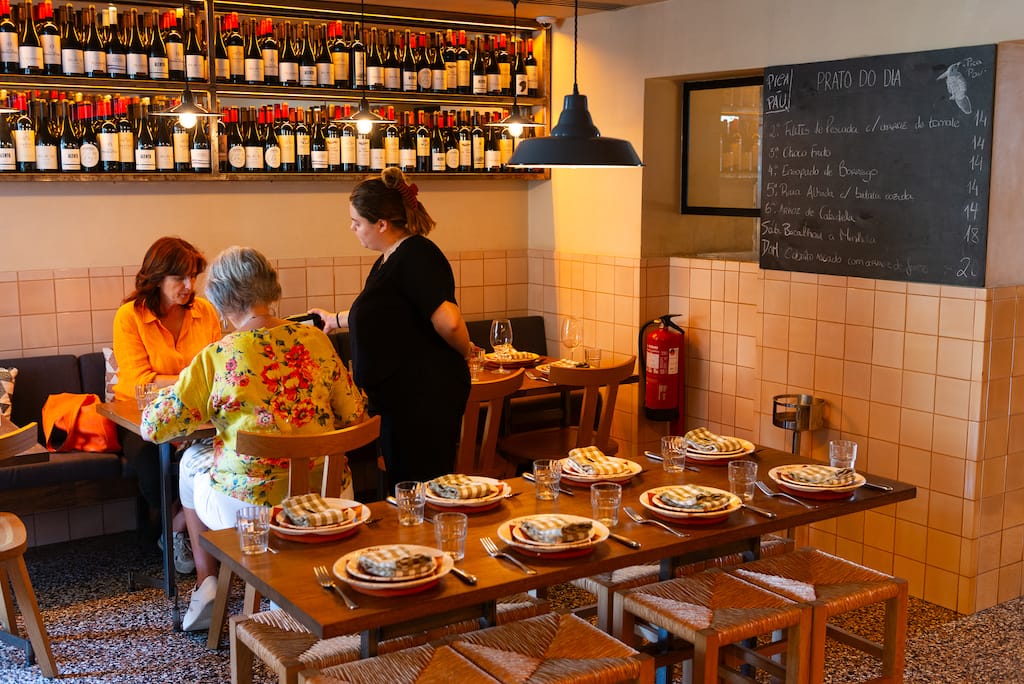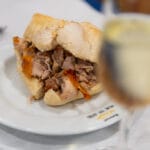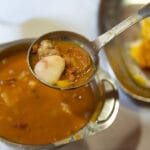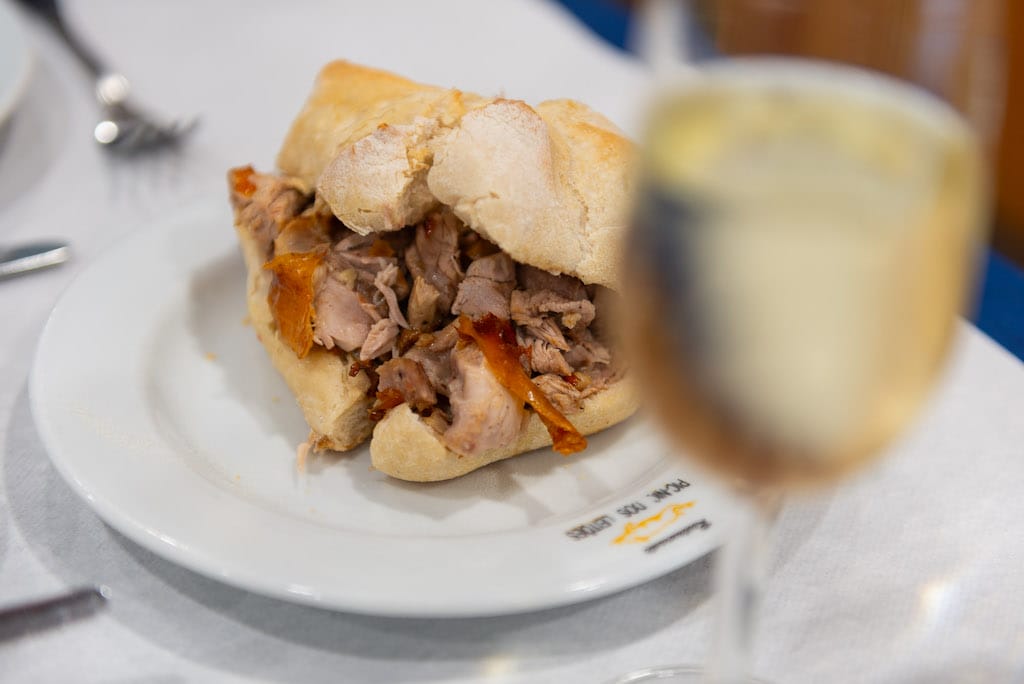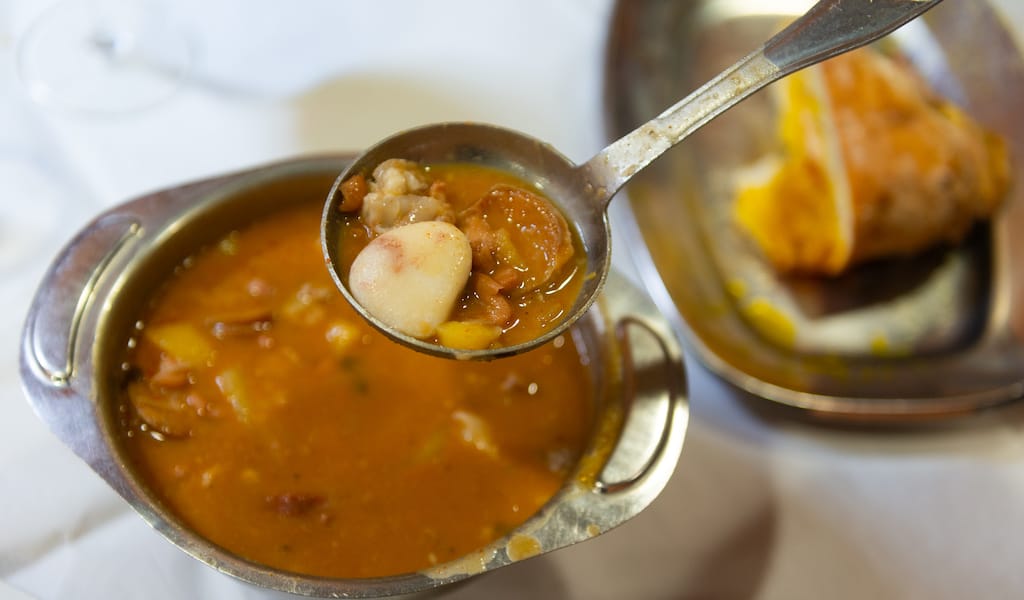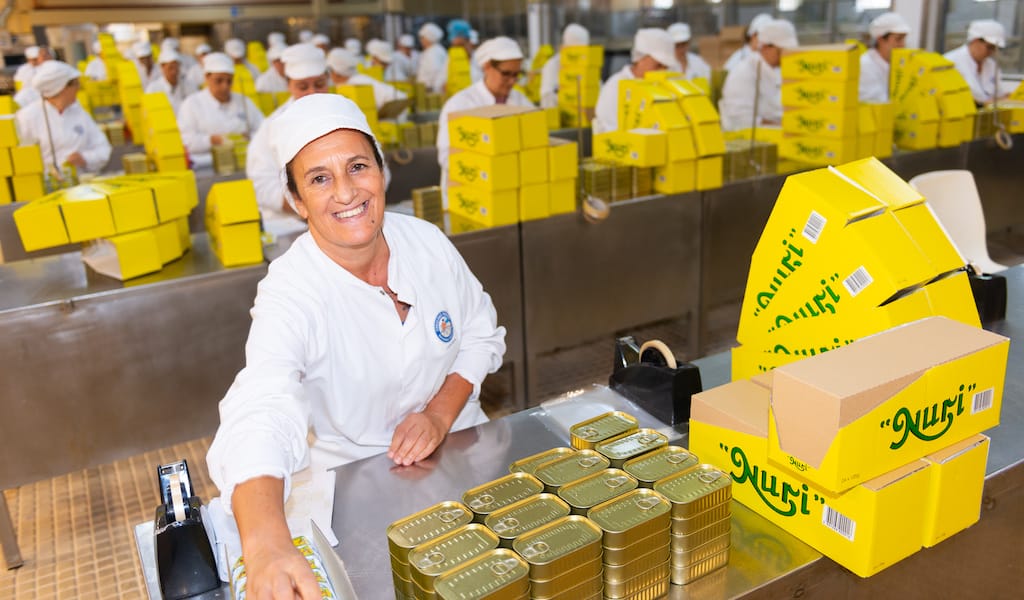Your friends or family are visiting Lisbon for the first time. Where do you take them to eat? If you’re us, it’s a no-brainer: Pica-Pau.
Open for less than a year now, the restaurant, for us at least, has become a go-to introduction to the dishes, ingredients and flavors of Portugal. Or, more accurately, the dishes, ingredients and flavors of Lisbon.
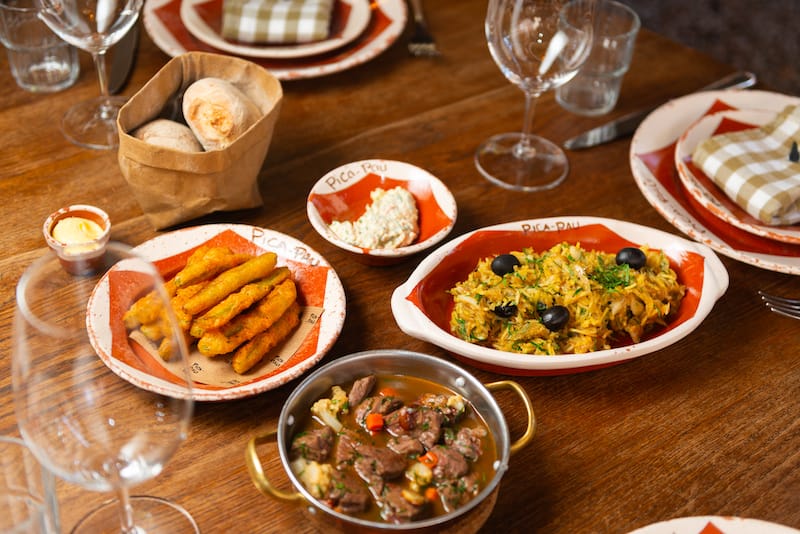
“Lisbon is a culinary region, just like Trás-os-Montes or Alentejo,” says Luís Gaspar, referring to Portugal’s far north and south, both regions with distinct, recognizable culinary legacies. He’s the chef behind Pica-Pau, and collaborated with the restaurant group Plateform to create a venue that centers around the sometimes-neglected cuisine of Lisbon.
To do this, their starting point was the restaurant’s namesake. Pica-pau translates as woodpecker, but in Lisbon it also refers to a dish of seared cubes of beef served in a wine or beer-based sauce seasoned and supplemented with garlic, mustard and pickles (the name likely stems from the way people traditionally eat the dish, jabbing it with a toothpick). The version at Pica-Pau boasts almost luxe touches that include high-quality loin – “the most noble, tender cut” according to Luís – and a sauce based around white wine and beef stock, reduced until silky and rich.
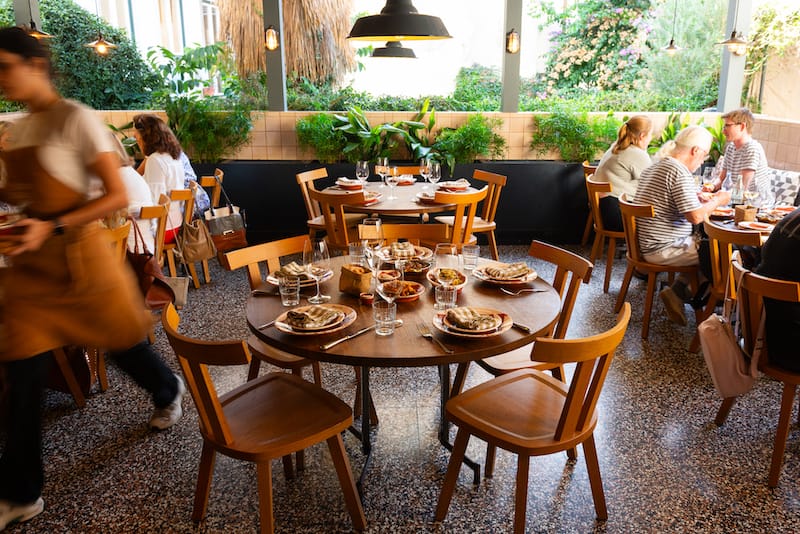
The dish is emblematic of a particularly Lisbon genre of eating that’s highlighted at Pica-Pau: petiscos. Described as “Snacks” on the English-language menu, these are casual bites meant to be combined with a drink, a culinary tradition found at beer halls and seafood restaurants across the city.
“The idea is so that people can order lots of different dishes,” Luis tells us. Indeed, petiscos at Pica-Pau range from plates of cured ham from Alentejo, to small salads revolving around ingredients such as octopus, boiled pig ears or salt cod and chickpeas, rissoles filled with peppery suckling pig, and clams cooked with garlic and coriander, among other items.
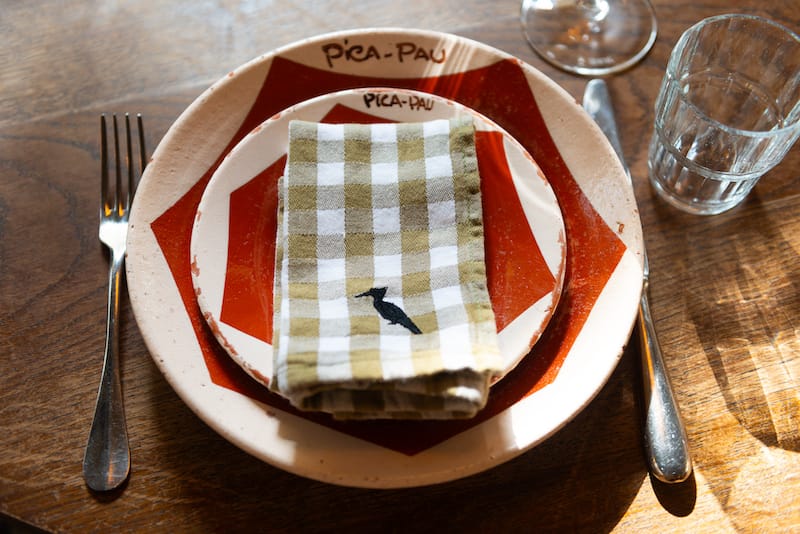
A very local example of the genre is the restaurant’s take on peixinhos da horta. The name can be translated as “little fish from the garden,” a tongue-in-cheek description of battered and deep-fried green beans.
“It’s a dish we brought to Asia, which became tempura,” Luís reminds us – peixinhos da horta was, indeed, introduced to Japan by Portuguese sailors in the 1500s. At Pica-Pau, peixinhos da horta take the form of golden batons that are light and crispy – downright tempura-like compared to the heavier standard versions. They arrive dusted with a fragrant, barely spicy smoked paprika, and paired with a tartar sauce-like dip but are so singularly delicious, the latter isn’t necessary.
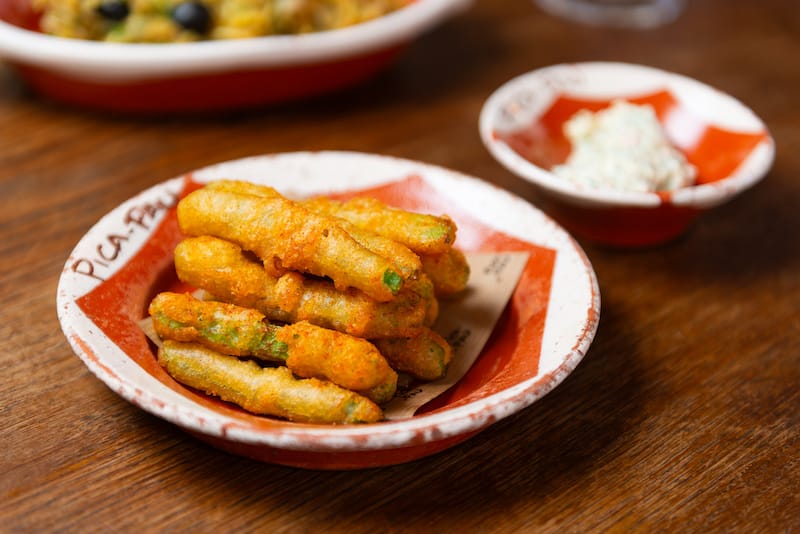
Lisbon is, after all, in Portugal, where even a light meal requires bread, and the headlining carb at Pica-Pau takes the form pleasantly doughy, dense rolls made in the style of Mafra. They’re served warm, with a tiny bowl of salty, rich Rainha do Pico, from the Azores, one of the country’s best butters and, in a charming gesture, a small bowl of pica-pau sauce.
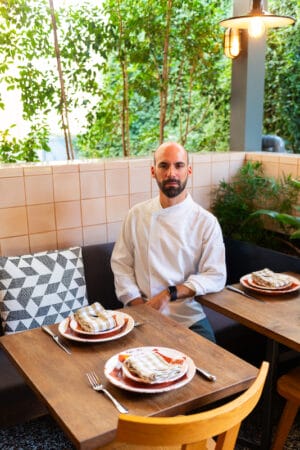
Although petiscos seem to rule the menu at Pica-Pau, there are a few heartier dishes, including, in typically Lisbon-tasca style, a prato do dia, a dish that changes on a daily basis. When we visited, it was bacalhau à Bràs, a classic Lisbon combination of salt cod scrambled with eggs, onions and matchstick potatoes (see the recipe here). We ask Luís about other dishes of the day and he mentions cabidela, served on Thursdays, a dish that combines chicken and chicken blood braised with rice. “People come to the restaurant just for this dish,” he tells us, and as if on cue, a customer stops by and says hi to Luís, mentioning to us that he’s a regular on Thursdays.
Small or big, dishes are best enjoyed in the restaurant’s semi-open-air dining room, and are served on rustic clay crockery, custom-made in Alentejo. There’s a wine list with several light, bright options, many with origins in the Lisbon area. But the most refreshing single aspect about Pica-Pau might be its emphasis on the food.
“The idea is to represent the recipes, ingredients and technique, not the chef,” says Luís. The only thing we’d add to his description is the place – Lisbon.
Austin BushAustin Bush
Published on November 08, 2023
Related stories
February 7, 2024
PortoAt first glance, there’s not much to see in Mealhada, a town in Portugal’s central inland Bairrada region about an hour’s drive south of Porto. If there is a main feature here, it’s probably the EN1, the country’s original north-south highway, which slices the town in half, providing a conduit for a seemingly never-ending parade…
January 19, 2024
LisbonIt’s an early example of guilt tripping. The story goes that a monk arrived in a Portuguese village, hungry and clever. He grabbed a rock and carried it door to door, claiming that it was his only ingredient, asking people if they would be kind enough to supplement it so he could make a meal.…
December 7, 2023
PortoMatosinhos, it could be said, has seen better times. In its heyday, the semi-industrial-feeling port city just north of Porto was once home to 54 fish canneries. Today, only two remain. Along the city’s wide, empty-feeling streets, some of the city’s former factories and their graceful Art Nouveau facades have been reappropriated as other businesses…







































